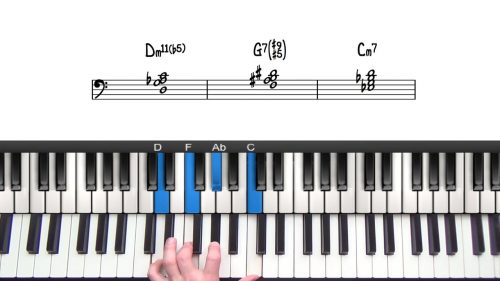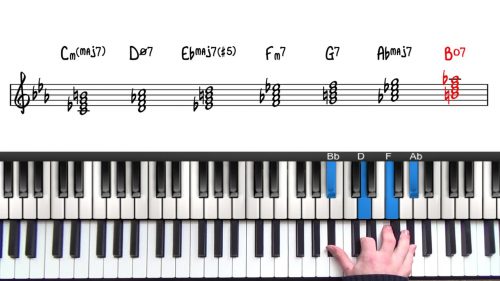Summertime Jazz Piano Tutorial
In this 3-part lesson we explore George Gershwin’s Summertime.
We start by playing through the form with left hand voicings to get a good grip of the melody and chord changes. We’ll then add in some bigger voicings and passing chords to create a fuller and more interesting sounding arrangement.
In part 2 we introduce a simple walking bass linewhich outlines the root and 5th of the chord. This is a nice way to get started with walking bass lines and is also very effective device when playing solo piano.
In part 3 of the tutorial we analyse a section of an improvised solo and play this over the bass line.
Finally, we will talk about the importance of transcription and why it is an essential element of your jazz piano study.
Practice Tips
-
Notice how passing chords are used in this arrangement.
-
The form is short and repetitive and so passing chords are a useful tool to add variety to the changes.
-
Use the iRealPro app as a backing track and set the drums to "click on 2 & 4"







Hayden,
I really love and appreciate your teaching style. I like that you keep it simple at first, then add your complexities. Great job!
Cheer,
Glenn
Hi there! I was a little confused on one of the chords you did here. On one of the A minor voicings, you did a so-what chord voicing. However, it had an F (or b13/#5) in it. You ended up calling it a regular 13. Is it acceptable to have #5 in minor voicings?
Hi Nyjal,
Please can you send me the time in this video that I use this voicing?
I think I may have harmonised a melody line using So What Voicings which is a common harmonisation tool, you can see more about that here: pianogroove.com/jazz-piano-lessons/so-what-chord-voicing/ (see chapters 3 and 4)
If you can send me the exact time in this video I can give you a definitive answer.
Cheers,
Hayden
It was around 13:40. It looks like a D so what voicing. I was just confused with the F being on A minor. I’m not used to sharp 5s being in minor chords. It’s on the very last line of the song.
Hi Nyjal,
Apologies for the late reply here.
Yes indeed that voicing is a little unorthodox but it does work because the 4th intervals create a very ambiguous sound.
Instead of the #5, i would look at the note F as the b6 which is the 6th tone of the A harmonic minor scale, so it is a minor scale tone.
I actually just published a new course on minor harmony and improvisation, here’s the link:
pianogroove.com/jazz-piano-lessons/minor-harmony-improvisation/
I that course we explore the different minor scales and how and why they are used in jazz piano.
I am also hosting a seminar next week on minor improvisation, you can add the seminar to you calendar and register for updates here:
pianogroove.com/live-seminars/minor-key-improvisation/
Hope to see you there!
Cheers,
Hayden